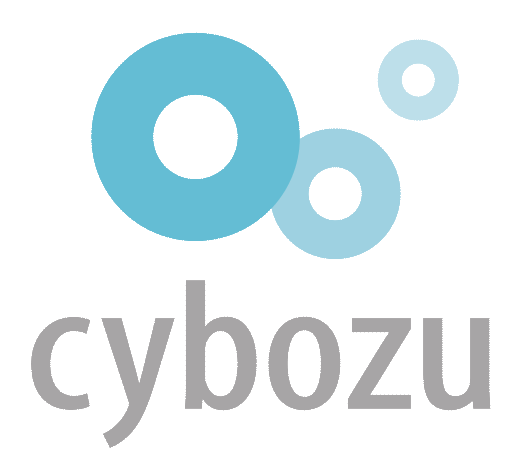Cybozu, Inc.’s mission is to “create a society brimming with teamwork.” In addition to developing and selling cloud-based groupware that promotes team information sharing and communication, it is also engaged in projects such as teamwork training for companies and organizations.
The challenge
Improved “help” document production workflow: traditional CMS management
Cybozu, Inc.’s Technical Communications team is responsible for the design of UI text on products, the creation of documents such as help sites and release notes, and the translation and localization of them.
Up until now, the team used a content management system (CMS) for creating Japanese documents and translating them into English and Chinese, as well as managing the website.
During the translation process, each time an article was updated, it was delivered as a PDF file, and the article author manually highlighted the changes and passed them back to the translator. The translator opened the received files one by one, checked the highlighted areas, and re-translated the updated sections on their computers. They manually added those changes again into the CMS and converted them to HTML. In other words, if there were 20 pages of updates, they needed to provide 20 PDF files and perform a massive amount of manual work. This led to frequent omissions—failing to highlight changes or overlooking changes due to the manual work needed.
Support for speeding up with agile development
Cybozu, Inc. began introducing agile development as a new method of software product development. Agile development is a method of rapid development via repeating a short development cycle multiple times and flexibly making changes according to the situation, regardless of the initial specifications.
It became clear that creating and translating documents on time with this accelerated development cycle would not be possible with the previous manual process. Therefore, the technical communications team decided to significantly revamp the foundation of the documentation site. Here’s how:
The solution
Version management with Git and incremental change management with Memsource
The team wanted to have the system manage incremental changes to streamline the creation process. First, we decided to manage the content in Git. This allows for content versioning and makes it easier to respond to frequent specification changes. Also, by using Memsource for translation, the changes to the source text were displayed automatically in Memsource.
Switching to plain text via Markdown notation
With the above system, Cybozu, Inc. also changed the method for creating manuscripts to enable easier management of incremental changes. Specifically, it became possible to create manuscripts in plain text using the Markdown notation. Markdown allows you to create text in an easily viewable format for humans while building sentence structures with simple notations. The advantages of the Markdown implementation are that it is easier for humans to view the incremental changes in Git, and that it is easier to translate them when loading them in Memsource because there are no complex tags like HTML.
Note that when you publish a Markdown file, you must convert it to HTML format. The team then uses a site generator called Hugo.
Benefits of implementing a version control system
Agile product development can involve frequent changes in specifications, changes in release timing, and cancellation of the release itself. One particular headache Cybozu, Inc. experienced was the issue where the release time shifted for each requirement when release times were changed.
The feature of managing branching of history, which a versioning system like Git has, is helpful in addressing this issue. With this mechanism, changes can be implemented in branches per requirement directly in documents.
Using this, even when there are changes or cancellations to the release schedule per requirement, you can easily adjust the timings of merging branches and cancel branches, thus dramatically reducing the workload compared to CMS management. Another advantage is being able to look up who made what kind of changes after the fact via automatic recording of the change history and the ability to revert to versions prior to merging branches.
Reasons for adopting Memsource as the translation management system
At Cybozu, Inc., we have been using Memsource as a translation management system for several years. We adopted it due to the low price of the service itself, not needing to ask translators to purchase packages or licenses, as well as the fact that Memsource alone handled Markdown files at the time of its implementation. It is also a significant benefit to the company that Memsource is fully operational in the cloud and can manage workflows.
The results
Revamping article creation and translation workflows
The process of creating and translating articles after the workflow improvements is now as follows:
Japanese article creation flow:
(1) Save articles written by writers on their computers to GitHub, a hosting service that uses Git’s mechanism. All article files are stored here.
(2) Human reviewers and automatic calibration functions check the articles.
(3) Once the check is completed and approved, the article is published on the Internet.
Flow of translating to English/Chinese:
(1) From GitHub, load the article to be translated into Memsource. By importing it as a ZIP file, you can create a project while preserving the workflow level of the content.
(2) After establishing settings for the translation memory and other assets, assign the translation to the subcontractor or internal translator. All deliveries and comments are completed in the Memsource cloud.
(3) After the translation and review, the translation results are exported. You can preserve the workflow level by exporting it as a ZIP file.
(4) Upload it to GitHub, create an HTML from the Markdown file in Hugo, and then publish the article on the internet.
Tricks for importing Markdown files
When the team converts Markdown files into HTML, Hugo’s proprietary extension notation is used. For example, the string {{% note%}} is shown in the browser as “✓ note” when the article is published. However, if you import it directly into Memsource, the string {{% note %}} will be visible to the translator.
To prevent this, the “Convert to Memsource” tag feature is used to automatically convert strings defined in regular expressions to Memsource tags. This ensures that the note is displayed as a blue tag with its content hidden to avoid confusion where the translator accidentally translates the note.
Implementation of machine translation
Currently, human translation constitutes the majority of translation of document sites at Cybozu, Inc., but we have introduced machine translation in “Garoon,” a groupware for medium- and large-scale organizations.
Version 5 of Garoon, released by the company in October 2019, includes the addition of new features associated with product upgrades, greatly modifying the Japanese version of the help. Because there were about 2 million characters in Japanese, it would be impossible to release the Japanese, English and Chinese versions simultaneously with human translation. Therefore, we decided to introduce a post-edit method in which translators made modifications to machine translation.
The machine translation engine uses a paid machine translation service. Since Memsource supports many engines, we were able to specify which engines to use and use them for translation within Memsource’s platform.
In order to reduce costs and shorten work times, we placed an order with a translation company based on the actual man-month costs, rather than the unit price per character.
In the actual translation process, in order to take advantage of the human translation assets that were spent up to the previous version, we first determined the 100% matches from the translation memory and then used machine translation on the remaining edited segments.
Although the quality depends on the performance of the machine translation engine, the company is working to improve the quality by using a customizable translation engine.
“The new workflow, using Memsource, and other tools has greatly streamlined the document production process. I think that other companies that manage document sites that are continuously updated can learn from our process.”
- Mayuko Sawai, Technical Communications Team, Development Division, Cybozu, Inc. Technical Writer
Further Improvements for Cybozu, Inc.
At Cybozu, Inc., we would like to further reduce manual work by using Memsource’s Git connector to automatically create projects at specified times and using the continuous job functionality to make updates.
In addition, we are also looking into using the recently implemented feature in Memsource to give periodic feedback to translation companies and translators.
Also, there is a growing need for outsourcing of UI text translations currently done in-house due to the increasing number of multilingual projects. However, the problem is that it is difficult to show the UI of products in the process of development to external translators in a practical form. On the other hand, we believe that being able to attach screenshot images for each segment of Memsource makes it easier for translators to understand context and improve the quality of their translations.


